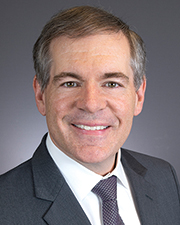
On April 17, 2019, the IRS released its latest proposed regulations and additional guidance on 1400Z-2 of the IRS Code to clarify questions presented by the regulated community and investors related to tax deferred “Qualified Opportunity Funds” (QOF). Passed as part of the 2017 Tax Cut and Jobs Act, the purpose of the new tax regulation is to encourage economic growth and investment in designated distressed communities known as Qualified Opportunity Zones (QOZ) through the use of QOFs.
There are many commercial/industrial properties in our distressed communities that are vacant, underutilized, or have legacy contamination that make adequate investments in these properties economically infeasible. The availability of substantial tax incentives such as QOFs can revamp the economic equation for many underused and underinvested sites to make improvement of these properties financially viable.
Although more mundane than new building construction or improvements, site remediation and infrastructure improvements are no less important and critical to improving land value, and the use of QOFs should be considered for this purpose.
On-Site Infrastructure Improvements
Although not specifically required in the QOZ regulations, long neglected site improvements to storm drainage systems, parking lots, and underground utilities can be made along with more typical building improvements using QOFs.
The proposed regulations provide that unimproved land within a QOZ that is acquired by purchase is not required to be substantially improved. However, if the land is unimproved or minimally improved and the QOF or the QOZB purchases the land with an expectation, an intention, or a view not to improve the land by more than an insubstantial amount within 30 months after the date of purchase, then the land is not considered QOZB property.
In the first round of guidance, the IRS allowed the holding of working capital at the QOZB level for up to 30 months, provided the following steps were implemented:
• There is a written plan identifying the assets held for deployment;
• A written schedule of when the held capital will be spent; and
• The plan is substantially followed.
However, there were continuing questions related to what uses, and various contingency scenarios, money could be spent on (other than purchasing tangible property). The IRS addressed both of these concerns (but not others) by making it clear that:
• Business development activities and expenditures (in addition to expenses of acquisition, construction, and making substantial improvements to the property) are allowable under the written plan;
• Each investment of capital into a QOZB can be subject to a separate 30-month period of deployment; and
• If the deployment plan is delayed due to government inaction (i.e. delays in permitting, regulatory reviews, etc.), the 30-month requirement can be extended, provided the application for the government action was submitted before the end of the 30 months.
Land Remediation
Additionally, the use of QOFs for site remediation and infrastructure improvements should not be overlooked. When the original QOF regulations came out, there was a concern that the 30-month limitation on using working capital would severely limit the ability of a QOF to adequately address environmental assessment and remediation issues that can take many years to complete effectively. However, the latest QOF regulatory guidance allows for multiple applications of working capital, which can work to the QOZB’s benefit when completing environmental assessments and remediation activities by using separate 30-month schedules.
For example, the environmental assessment or investigation of a QOZ site can be conducted in the initial 30-month schedule, then remediation related activities, such as feasibility testing, remediation planning and design, soil remediation, and groundwater remediation can be performed using subsequent investments and schedules. Upfront and long-term site development and remediation planning is highly recommended to take full advantage of the flexibility offered in deploying QOF investments.
QOFs should be looked at as an important element in the overall use of private investment dollars to leverage publically-available funding such as State and Federal Brownfields grants and loans. The proper use of this important tax-friendly investment vehicle should kick start needed site development and economic improvement in some of our neediest areas, and lead to more targeted and completed clean-ups in more of our distressed communities.
Robert Carr is chief operating officer of Zuvic, Carr and Associates, Inc., Rocky Hill, Conn.








